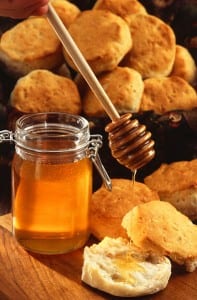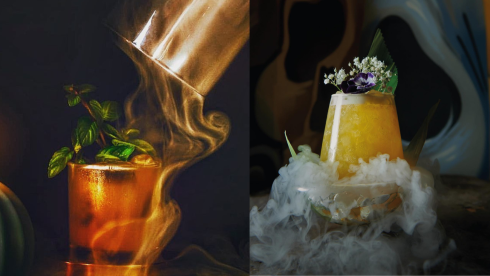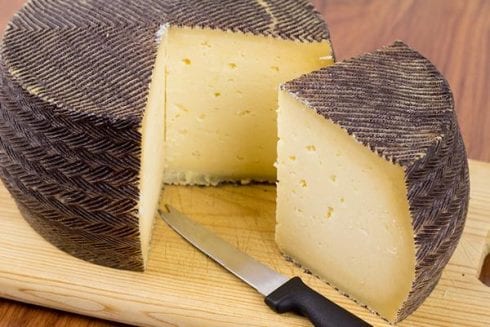Collette Bardell discovers how a colony of bees resembles a busy air terminal on bank holiday Monday
IT has the feel of a busy international airport on a bank holiday weekend… only all in miniature. Firstly there’s the constant drone – a small scale version of a jet engine roar, a continuous blur of arriving and departing bees.
Then, there are the incredible architectural forms; the natural hives, which could easily be an inspiration for a new Norman Foster-designed terminal.
And finally there is the smell, a distinctive smell, while not exactly jet fuel, it is a sweet, treacly and altogether intoxicating odour.
I am at a honey farm just outside Jerez, that of Rancho de Cortesano, where a clever observation window allows viewers to look in and see clearly how a hive functions.
It’s an enlightening experience that stimulates all the senses. Each of the hives is a fully formed colony with hierarchal, communication systems not dissimilar to our own.

Mother to each of the hives’ approximately 4000 bees, she is, quite rightly, protected and fawned upon 24 hours a day.
Living for between three and five years, she is fed the appropriately-termed royal jelly, which enables her to produce some 2000 eggs a day.
Around her are the male drone bees whose sole role is mating with her, keeping her pregnant as it were, and living usually up to 90 days only.
Worker bees do everything else from feeding the colony, cleaning it, repairing it and defending it, and they live between four and eight weeks.
Organic, healthy honey is the star ingredient in any eco-conscious cook’s kitchen.
With no additives and full of nutrients, it is easy to see why nature’s best naturally-produced product was important to ancient civilisations
Wherever there are bees, mankind has always harvested honey. And Andalucia is no exception.
“We are lucky to have just the right enviromental elements to produce a rich, varied and 100 per cent natural honey”, says Immaculada Garcia Ferñandez, an apiculturist (or honey harvester), from Rancho de Cortesano, based in the rolling countryside of Jerez.
This 25-year old family business is dedicated to harvesting and selling prize-winning honey.
With around 80,000 bees, and 2,000 beehives scattered around various national parks including Grazalema and Los Alcornocales, there is more than enough nectar to go around.
So it is little surprise to learn that the farm also makes a range of honey-based products, such as royal jelly, bees wax and propolis – a resin used for medicinal and industrial purposes.
The parks are full of flowers and water, the raw ingredients needed for honey production. Honeybees (which are only those from the Apini tribe) can travel up 10km to collect the nectar from flowers, which are then converted into honey, the bee’s food source.
Powerful antiseptic and antibacterial properties make honey a curative
Pollen is also collected by the bees back legs and is fundamental for cross pollination, thus nurturing the eco-system. By arranging for the bee swarm to collect in hives mankind has been able to semi-domesticate them into producing excess honey which is then harvested without harm to the bees.
Honey production has been manipulated by man for at least 10,000 years. Babylonian, Egyptian, Roman and Medieval texts all venerate its health giving effects.
The ancient civilisations considered it a devine nectar and attributed to it mystical and godly characteristics.
Its reputation was such that even the Old Testament refers to the ‘promised land’ as flowing with milk and honey.
With the advance of modern science, much, though not all, is known about its health giving properties.
A complex substance, its main components are carbohydrates in the forms of fructose and glucose, which provide the blood with two of its three most important sugars.
These ‘simple sugars’ slowly, but immediately, release energy – keeping you going for longer. Honey also has a low GI (Glycemic Index), the holy grail of the modern dieter, and is believed to have levels of antioxidants seen as key to today’s healthy eater.
With powerful antiseptic and antibacterial properties as a medicine, honey is also a curative when ingested. It can work well for a range of ailments including indigestion, stomach ulcers, insomnia and, most commonly, sore throats.
Used externally it is known to help heal burns and wounds.
At Rancho Cortesano you can experience first-hand the work of this sophisticated species that gives us this life-enhancing superfood. “We have many types of honey, all of which are dependent on the flower source used by the bees,” explains Inmaculada.
Encina (holm oak) honey is very dark with a distinctive taste and helps combat anaemia
“For a honey to be labeled with a specific name it must contain more than 50 per cent of the nectar from a particular flower or plant.”
The ranch produces many different types, including the famous milflores (thousand flowers) honey, which contains a variety of flowers and is the best substitute for sugar, and azahar (or orange blossom) from the banks of the Guadalquivir and Guadalhorce rivers, which is clear with the taste of orange, and has calming properties.
It also produces encina (holm oak) honey, which is very dark with a distinctive treacle taste and helps combat anaemia; romero (rosemary) from Granada, which is light in colour and good for liver problems and eucalipto (eucalyptus) which is clear or dark and hails from the Guadalete valley and tastes strongly of its source, good for urinary and respiratory problems.
Then there is madroño from San Jose de Valle, which has an amber colour and a bitter taste and is recommended for liver complaints; meloja, a mix of honey, cidra (a type of pumpkin used in pastry making in Spain) and spices, a traditional local dessert that’s great with goat’s cheese or ice-cream.
The dedication of Inmaculada and her family to apiculture comes from their love and care for the environment. “Honey is an amazing product and we are proud that many of our products now have eco-certification and that we sell not only to restaurants and food stores but to individuals who appreciate its taste and health giving properties”.
She advises that if stored well (in sealed jars out of the light) the product has an almost never-ending shelf life.
This was best shown when 100 years ago archaeologists found a series of jars of honey in an ancient Egyptian tomb. Incredibly it not only tasted good, but with no ancient curse attached, they lived to tell the tale. The elixir of life, indeed.
Rancho Cortesano – Museo de la Miel y las Abejas
Ctra Cortes – Cuartillo, Km 2, Jerez
www.ranchocortesano.net
Tel 956 23 75 28 or 635 51 47 86 for guided visits







Nice story. Where has Olive Press been hiding you?